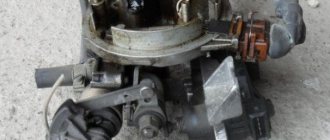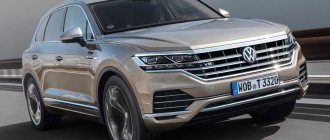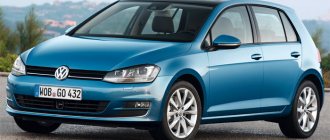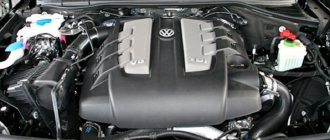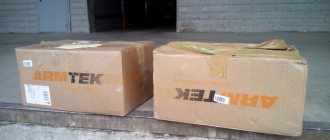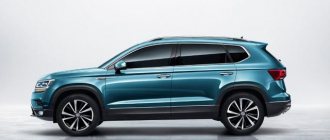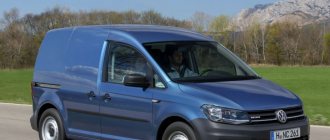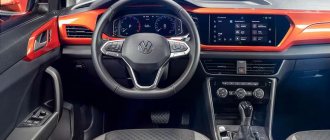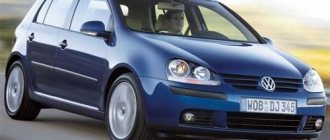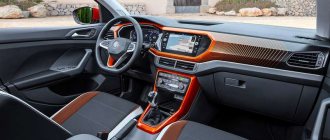The middle class is retreating. Just look at the sales statistics of recent years and the models that have disappeared from the market: Citroen C5, Honda Accord and Toyota Avensis. But they were good and significant cars. These are the trends - crossovers take the place of the middle class.
However, not all manufacturers abandon new generations of their models. The Volkswagen Passat is undoubtedly one of those whose demand is stable. True, one can notice a certain pattern - immediately after the presentation of the new generation, sales grow strongly, and then steadily fall. Therefore, it is easiest to find samples from the initial production period on the secondary market.
What are the advantages of the Passat? You can almost always count on easy resale. In addition, there are important functional advantages, such as a spacious interior with good ergonomics and rich equipment.
People buying a new car are less concerned about its durability, and this is becoming a key issue in the aftermarket. What about the Passat? The B8 generation is definitely much better than the B6. After several years of failures that plagued not only the Passat, but also other Volkswagen models, the time has come for a noticeable improvement.
Engines
For many years, TSI engines have caused criticism. But in this generation the situation is easier. 1.8 and 2.0 TSI do not have problems with increased oil consumption. But the timing chain still sometimes has to be changed, especially for those who like to press the gas pedal sharply and move mainly around the city. A set of parts with work will cost about 50 thousand. But the 1.8 turbo engine can bring a lot of driving pleasure and will be quite economical. With careful handling of gas, it needs 9 liters per 100 km, and acceleration to hundreds takes 8.3 seconds.
It is also worth noting the improvements in the 1.4 TSI series. These are representatives of the EA211 series, in which a belt is used instead of a timing chain (7,000 rubles plus 16,000 rubles for labor). There is no longer room for a combination of compressor and turbine; all units use only the turbine.
The 1.5 TSI debuted in 2021 and belongs to the modernized EA211 - EVO line, equipped with a particulate filter for gasoline engines (OPF - Ottopartikelfilter).
The 1.6 and 2.0 TDI diesel engines have a similar design. Due to limited power, the smaller one will not be a good choice. Turbodiesels do not collect negativity, but this does not mean that they are able to cover half a million kilometers without failures.
First of all, you need to take into account the wear and tear of the fuel system - the high-pressure pump and injectors. Problems with the first element can lead to contamination of the fuel system with shavings. In this case, the master will have tedious and expensive cleaning work. The injectors are not too expensive (about 18,000 rubles) and are easily available.
The timing belt replacement interval for diesel engines is 210,000 km. But mechanics recommend reducing it to 120,000 km. The belt can withstand more, but there is a risk that the coolant pump will fail. A timing kit (6,400 rubles) and a pump with replacement work will cost 30,000 rubles. But this is nothing compared to the cost of overhauling the engine.
It is worth recognizing that the Passat 2.0 TDI is good in terms of dynamics. The 190-horsepower version accelerates to 100 km/h in 8.4 seconds and can be content with 6-6.5 liters of fuel per 100 km. Diesel 240 hp has a number of differences - two turbines with a maximum boost pressure of 3.8 bar, other injectors with higher pressure, etc.
Engine Volkswagen Passat 2.0 TSI (210 hp) characteristics, fuel consumption, dynamics
- Working volume – 1984 cm3
- Number of cylinders – 4
- Number of valves – 16
- Cylinder diameter – 92.8 mm
- Piston stroke – 82.5 mm
- Power hp/kW – 210/155 at 5300-6200 rpm
- Torque – 280 Nm at 1700-5200 rpm
- Compression ratio – 10.5
- Type timing/timing drive – DOHC/belt
- Fuel brand – gasoline AI 95
- Ecological class – Euro-5
- Maximum speed – 236 km/h
- Acceleration to 100 km/h – 7.6 seconds
- Fuel consumption in the city – 10.8 liters
- Combined cycle - 7.7 liters
- Fuel consumption on the highway - 5.9 liters
Thanks to a more advanced supercharging system, the Passat diesel produces more power than the one in the Tiguan. In addition, this modification of the two-liter TDI is also more economical.
What about DSG?
The vast majority of Volkswagen Passat 1.8 and 2.0 TSI are equipped with DSG. This is a good box to use. It changes gears quickly, but has no timeless elements. By 150-200 thousand km, wear of the dual-mass flywheel (28,000 rubles) and clutch (34,000 rubles) is inevitable. For work in the service they will ask about 8,000 rubles.
In DSG, you should not forget to change the oil regularly. Mechatronics has its own circuit.
The clutch of a manual transmission can travel over 200,000 km. The flywheel of the diesel version will cost 40,000 rubles out of your wallet, and the clutch kit will cost 37,000 rubles.
Passat B3
Production began in 1988. It was built on its own platform. There are only two body styles left - a four-door sedan and a five-door station wagon. Produced until 1993. Over the entire period, 1.6 million cars were sold.
Description
Externally, the car body has changed. This was the first Passat to have a transverse engine. Another difference was the absence of a radiator grille. Air for blowing the engine entered through the intake in the bumper. The body is partially galvanized. Very high quality body paint. Power steering appeared.
Design
The fashion for “blown” shapes is already visible in the B3 design. The shapes have become more streamlined due to swollen arches. Black molding all around, rectangular lights front and rear.
Read also Review of Volkswagen Caravel 2019
Specifications
Under the hood of this model, gasoline engines of 1.6, 1.8 and 2.0 liters were usually installed, but there were also 2.8 liters. Power varied from 75 to 174 hp. With. Diesel engines with and without supercharging, 1.6 and 1.9 liters
There were the following modifications:
- CL – basic configuration;
- GL – large equipment;
- GT – sports version with injection engine, sports seats and all options;
- GLX – the richest equipment for America;
The engines had modifications:
- 16V – 16-valve head (volume 1.8 and 2.0 liters);
- G60 – with G60 supercharger and Syncro all-wheel drive system;
- VR6 – 6 cylinders with VR – layout;
- 16VG60 (Limited) is the most powerful modification.
The cars were equipped with:
- Four and five-speed manual transmission;
- Four-speed automatic transmission.
Pros/Cons
Pros:
- Comfortable spacious interior;
- Reliable suspension;
- A real workhorse.
Minuses:
- Unsafe doors;
- Low body kits that reduce ground clearance;
- Unreliable main gear oil seal.
Chassis
There are no special problems with the chassis of the Volkswagen Passat B8. In general, the suspension components and brakes can withstand impressive mileage. However, sometimes there are creaks.
The noise can come from the rear silent blocks of the front levers (3500 rubles for the original or 600-2000 rubles for an analogue). Specialized services recommend installing analogs from the Audi RS3 instead.
Ball joints can become unusable after 100-150 thousand km (over 2000 rubles). Shock absorbers (8-9 thousand rubles) and support bearings (1000 rubles) will last approximately this long.
The front stabilizer bushings come only assembled with the stabilizers. However, they usually take a long time. The rear stabilizer bushings can be replaced separately.
Several service actions were carried out (particularly due to the possibility of brake disc destruction, ESP valve sticking or even wheel bearing cracking). It should be honestly admitted that they concerned single specimens.
Other problems and malfunctions
From time to time, scratches and chips are found on the paintwork of the body (especially in the lower part). And the hard rear door seals rub off the paint in the area of the wheel arches.
Sometimes extraneous sounds appear in the interior. One of the typical places is the factory hatch. On the Internet you can find instructions on how to modify the mount to eliminate noise.
There are complaints about the noisy operation of the mechanism in massage chairs.
Despite the rich equipment, there are no electrical problems.
A number of owners were faced with replacing the head unit due to the appearance of stripes on the touch screen.
Modifications
Alltrack
The VW Passat B8, like its predecessor, was offered in the Alltrack all-terrain version. If not for the high cost, much more of these cars would probably have been sold. The ground clearance is a decent 174 mm – this is enough for traveling on a dirt road and visiting clearings. In such conditions, all-wheel drive and the Offroad driving program are useful. Externally, the car stands out with off-road stylistic accents.
Passat GTE
This is a classic plug-in hybrid, i.e. with the ability to charge the battery. The battery has a capacity of 9.9 kWh, and the time to fully charge from a home outlet takes about 5 hours. In the GTE version, the 1.4 TSI engine is combined with an electric motor (115 hp). Gasoline consumption (50 liter tank) greatly depends on the battery charge level and the distance traveled without recharging it. The range can exceed 1000 km, and on pure electricity you can cover 50 km.
Let's sum it up
If you look at Volkswagen power units in the context of history, you can see that the peak of optimal engines occurred in 2000. It was during this period that the most successful gasoline engines were developed and launched, and diesel engines received a second life with updated environmental equipment. VAG power units are known for their durability. They can beat almost any manufacturer, including famous elite companies. It should be noted that the service life of engines, even the most successful ones, greatly depends on the materials used for maintenance and, in general, on the quality of service. If unsuitable oils are used for maintenance, the engine will die after just a few tens of thousands of kilometers.
The German company has always had the principle of a golden mean when developing engines. Audi has always developed advanced units for cars, Volkswagen has used proven, reliable technologies, and Skoda and Seat have updated already slightly outdated engines of elite brands. But today everything has changed. Motors are being developed in a modular manner; they have all lost reliability and become less predictable. Therefore, of today’s current engines, only the 2-liter diesel engine, which took its roots in the mid-90s, was included in the selection. Which Volkswagen engine do you consider the most successful?
Source
Design features
Despite the external similarity with the B7, the Volkswagen Passat B8 is based on the new MQB platform. The designers managed to significantly reduce weight. The body structure uses aluminum and high-strength steel. Despite the weight reduction, torsional rigidity has increased to 30,000 Nm/degree.
The engines are well known from the brand's models, but have been modernized. Many versions were equipped with all-wheel drive as standard or optional. The Haldex coupling is responsible for transmitting torque to the rear axle.
The Passat B6 already had classic MacPherson struts on the front axle. B8 retained this circuit, and thanks to the electronics, there is no need to complain about the behavior. A multi-link design is installed at the rear, and the springs are located next to the shock absorbers. The rear suspension design of front-wheel drive and all-wheel drive vehicles has some differences.
A lot of work has been done on the equipment. The Passat B8 is the first Volkswagen to feature a digital instrument panel, a head-up display, a distance control system with pedestrian recognition and city emergency braking.
Passat B1
In 1974, this car received the title "Car of the Year". Produced until 1981.
Description
It had a 2- or 4-door sedan or 3- and 5-door hatchback body. Four-cylinder petrol engines:
- 1.3 liters;
- 1.5 liters;
- 1.6 liters;
- Diesel 1.5 liters.
Transmission:
- 4-speed manual transmission;
- 3-speed automatic transmission.
Design
As you know, the design of the car was developed by the famous car designer Giorgetto Giugiaro.
Specifications
For the Passat B1, gasoline carburetor and injection engine models with a power of 55 to 110 horsepower or a diesel engine with a power of 50 horsepower were supplied. With. Front wheel drive. Steering system is rack and pinion type. Disc brakes on the front wheels and drum brakes on the rear. MacPherson struts on the front axle, continuous axle with coil springs on the rear.
In addition to hatchbacks and sedans, the Passat B1 was produced in station wagon and fastback body styles. The fastback has the same body as the hatchback, but the trunk lid does not extend to the rear window.
Pros/Cons
Pros:
- Spacious interior;
- Stability on the road;
- Low fuel consumption;
- Sturdy cart and suspension;
- Engine reliability;
- Large trunk.
Minuses:
- No seat belts or airbags;
- No power steering.
